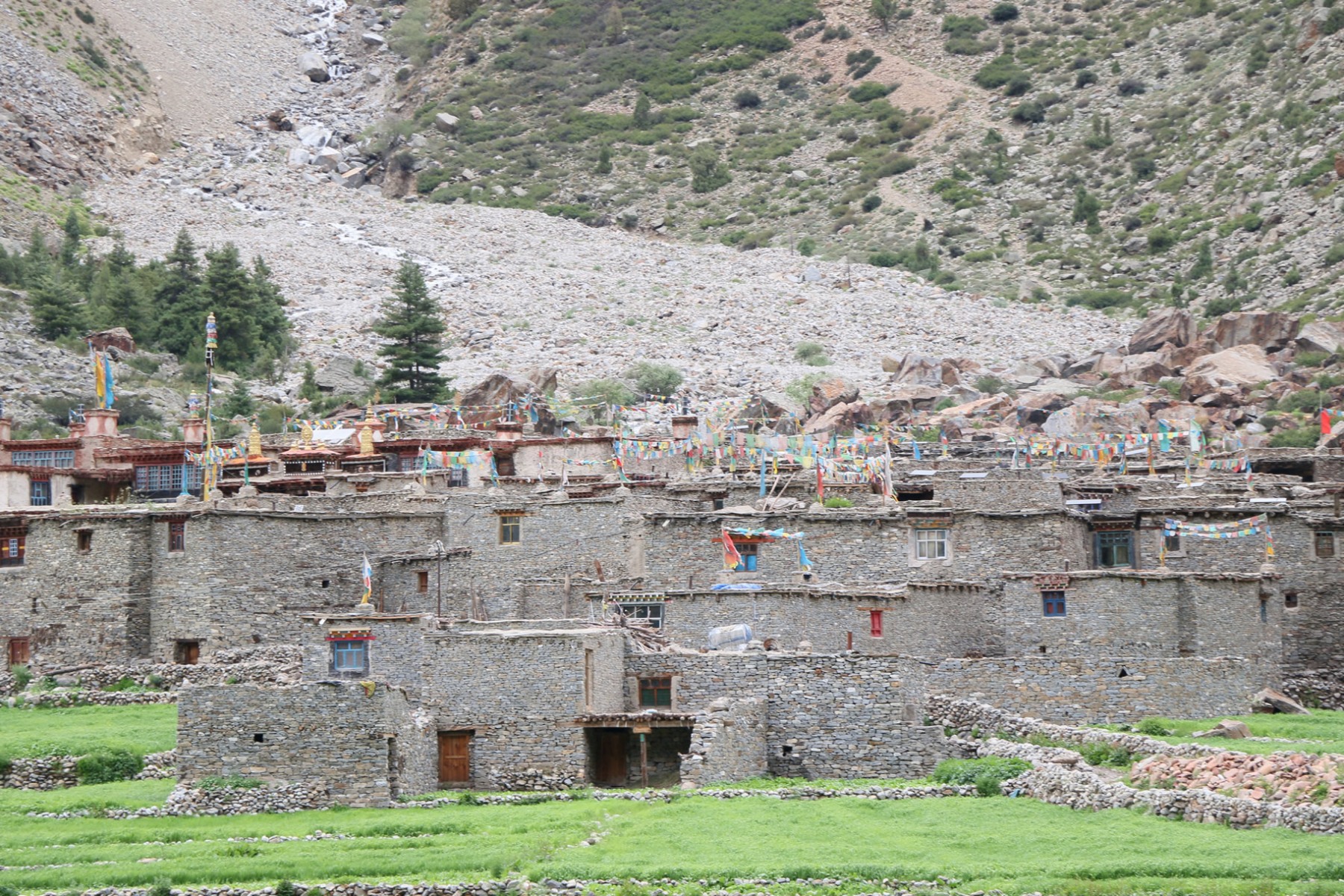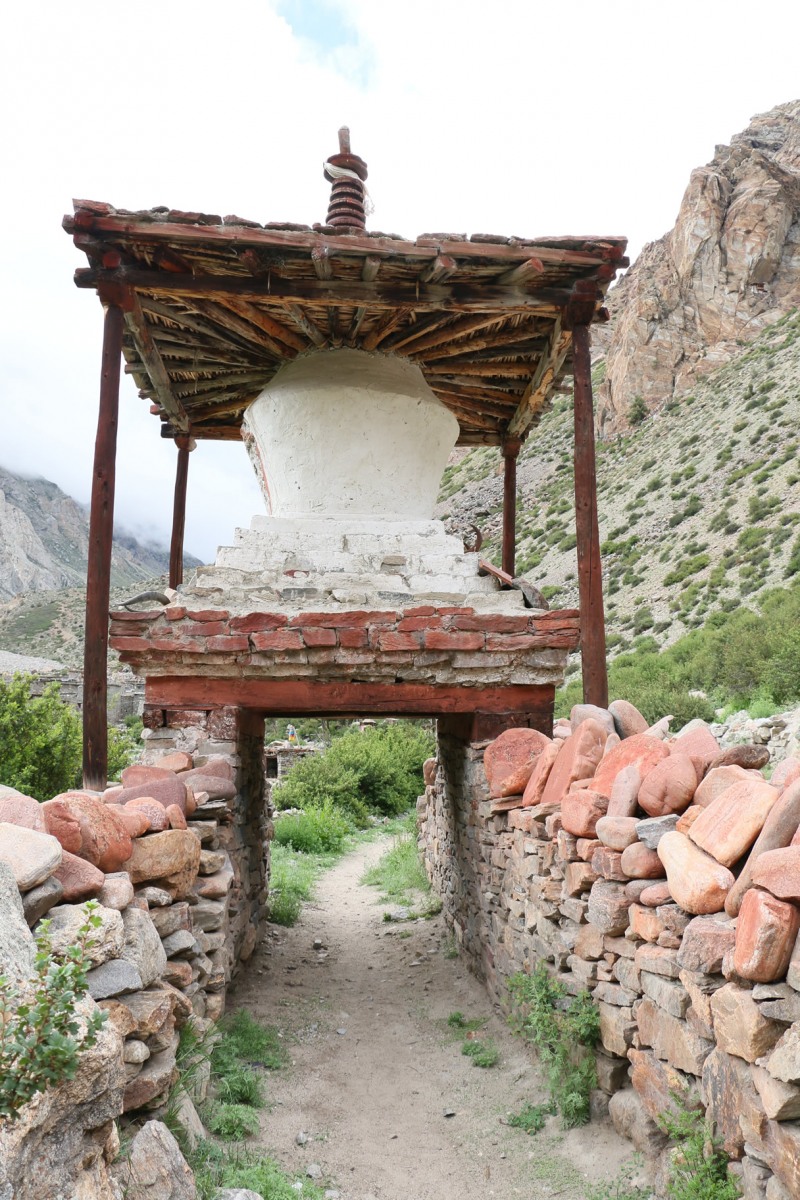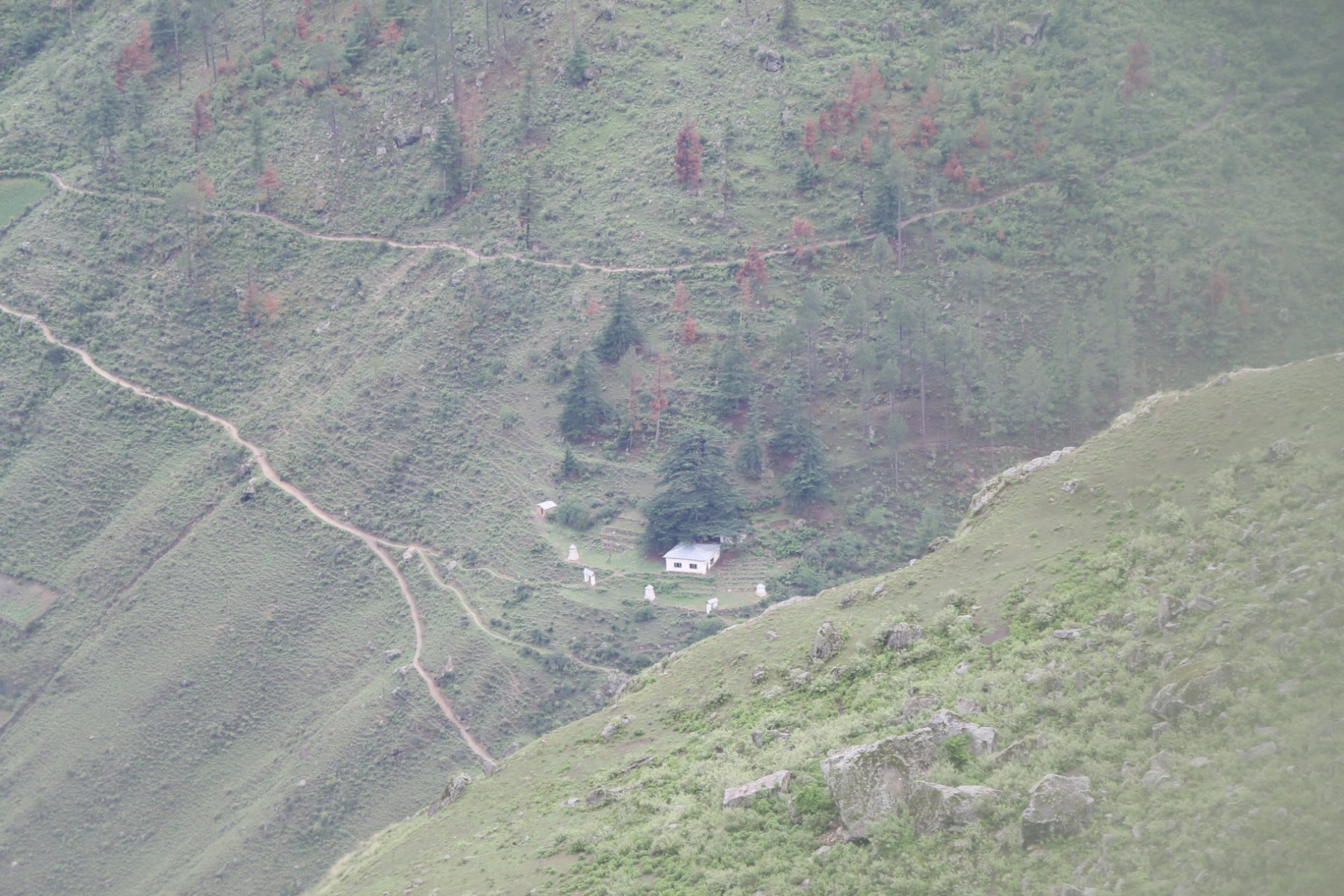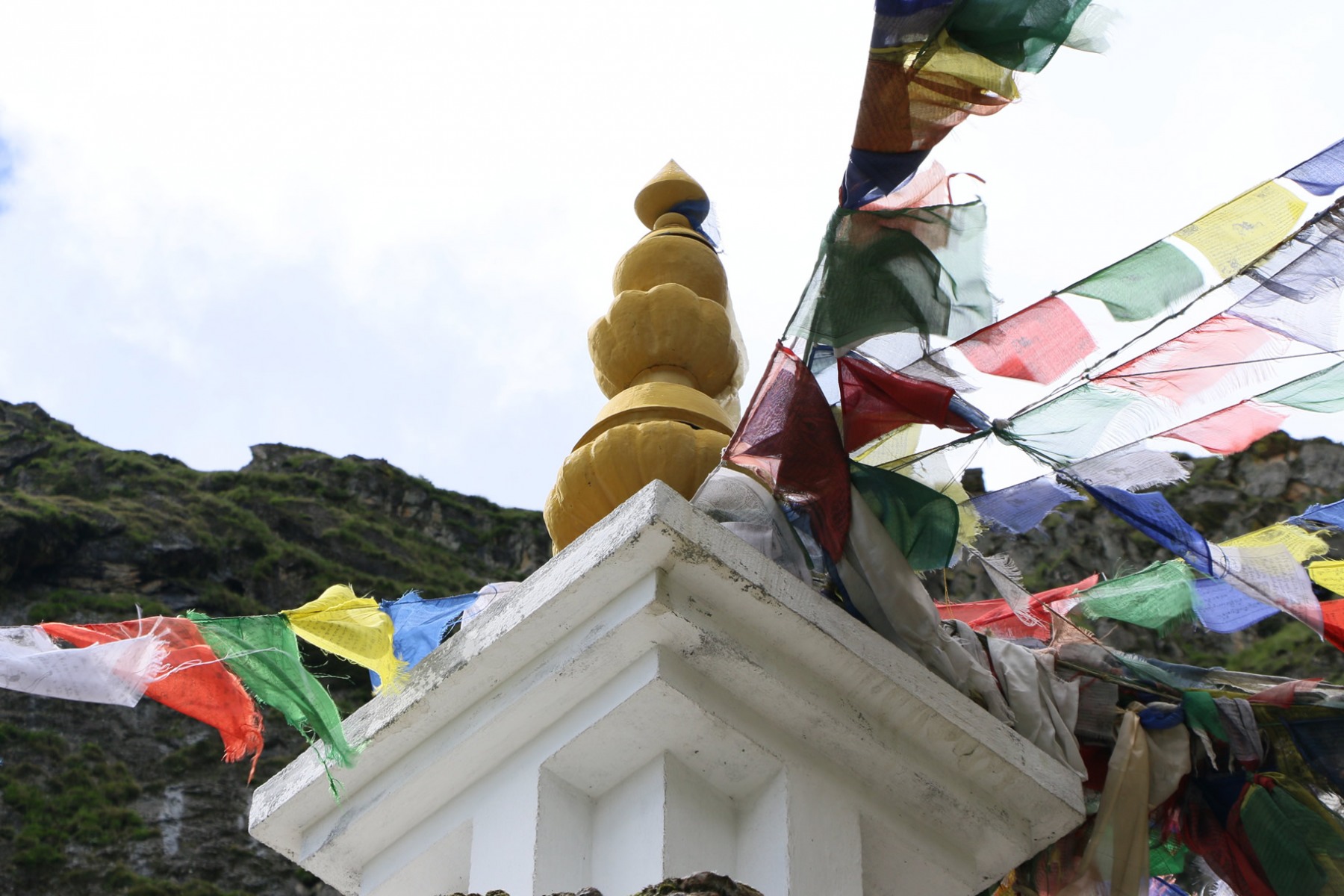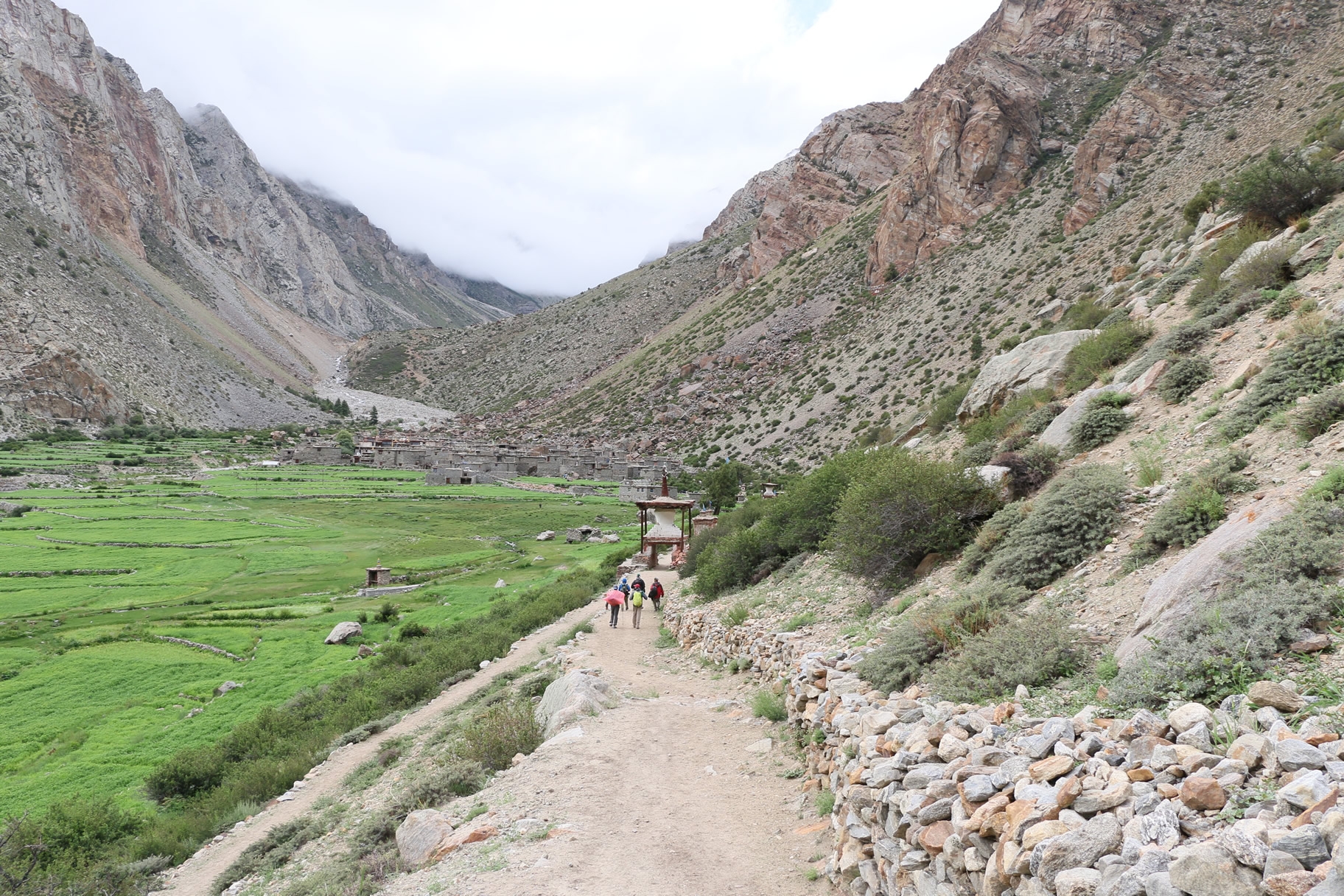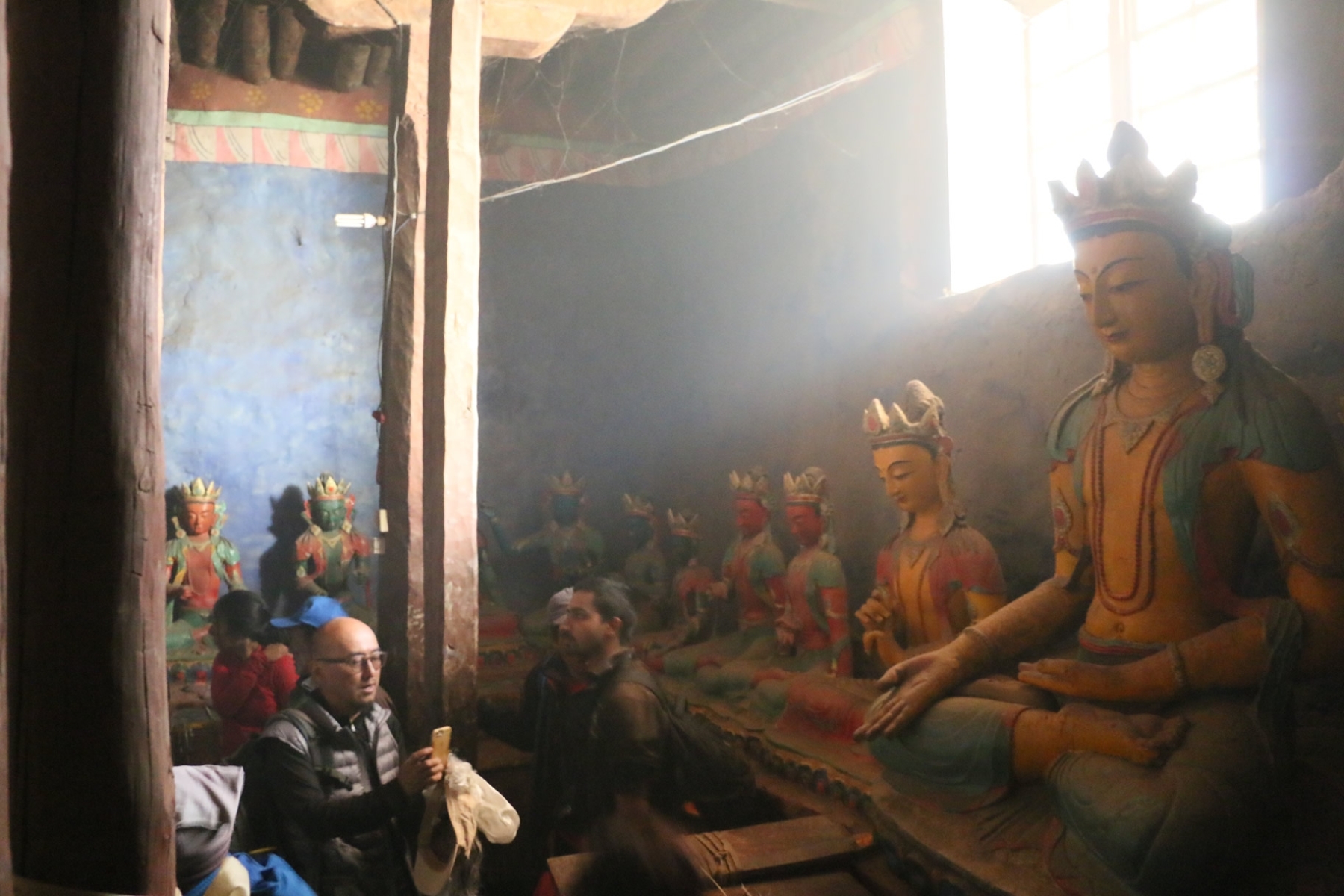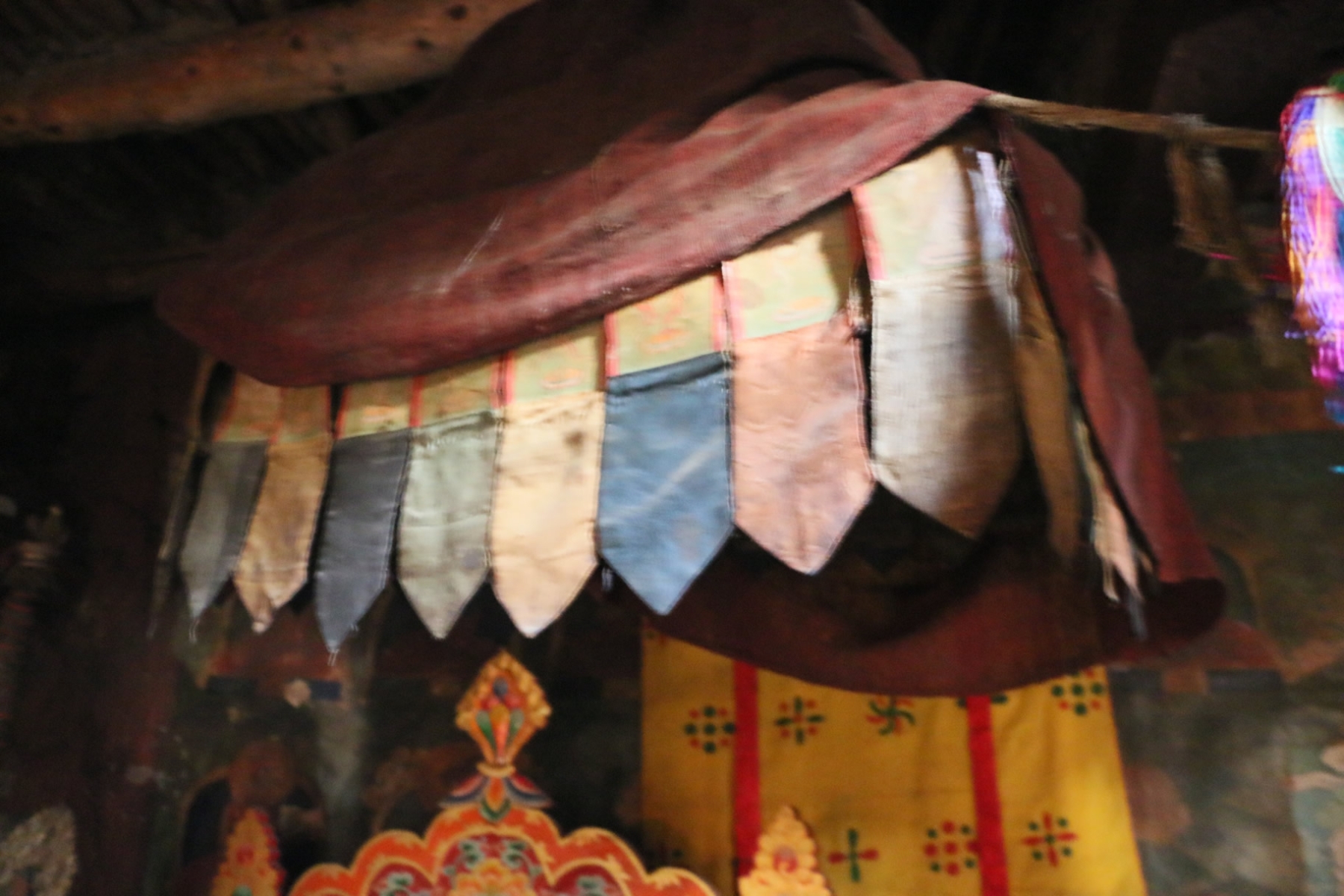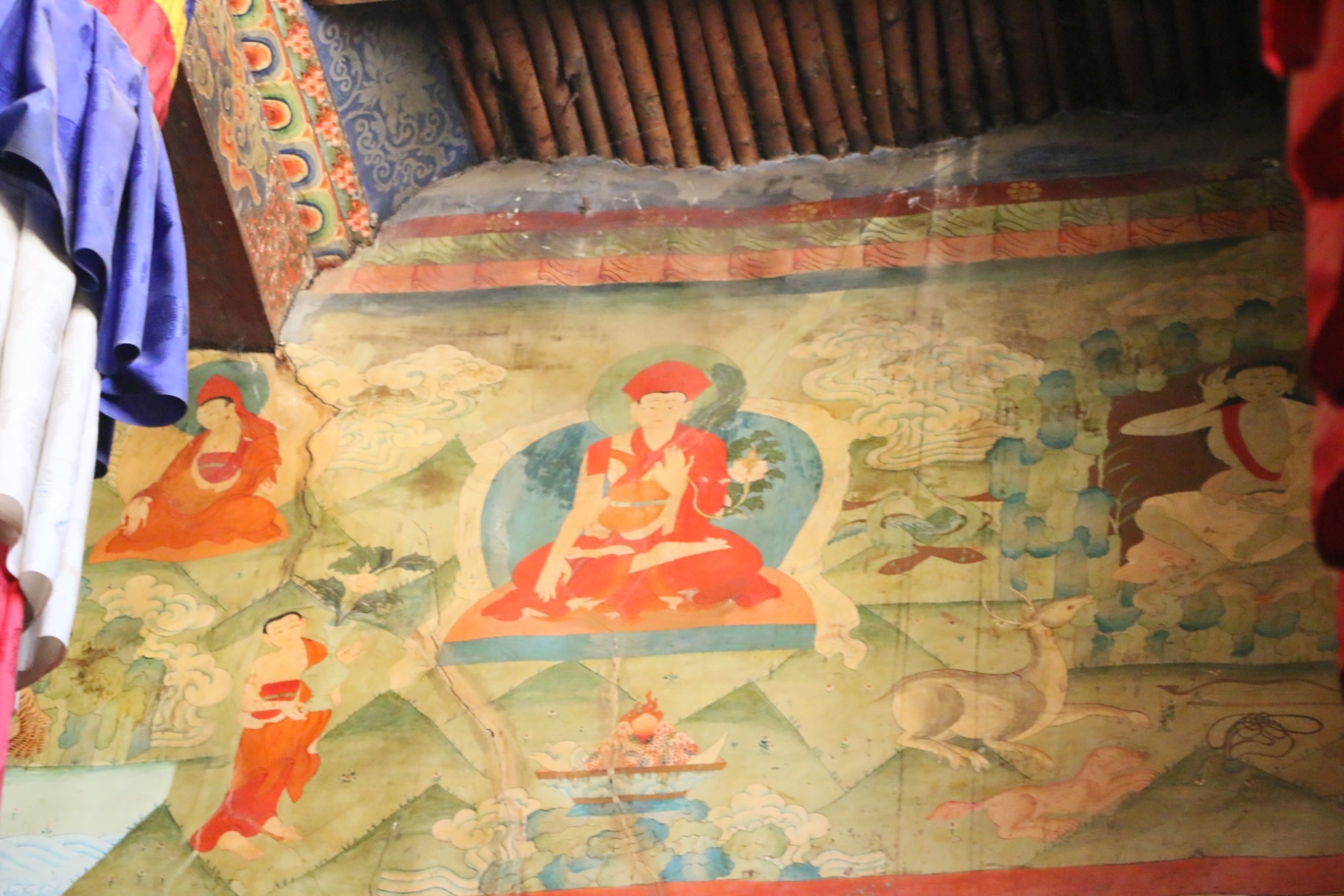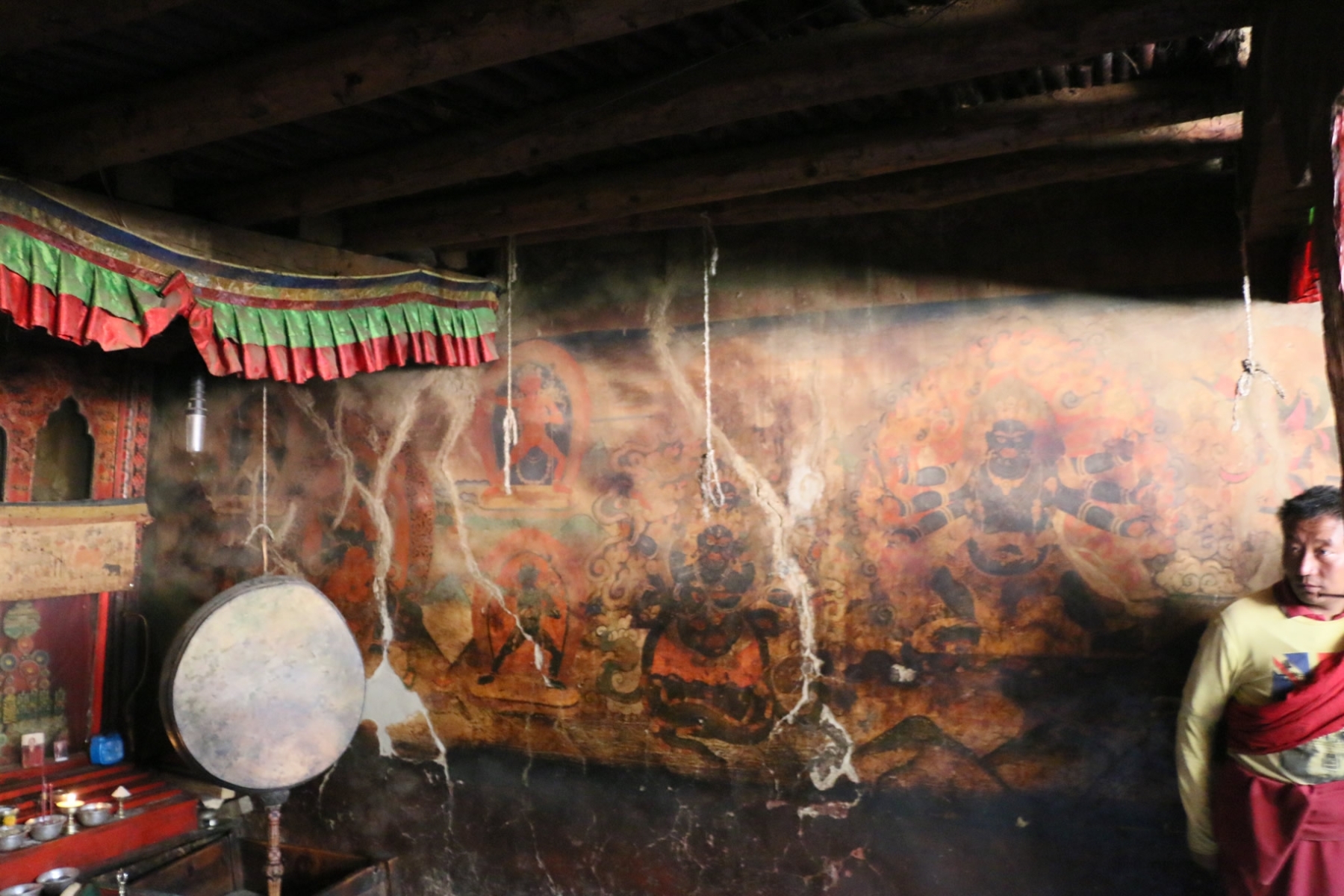Khyunglung is a complex of caves set in the hills on the north bank of the Sutlej River about 30 km west of the hot springs and gompa of Tirthapuri and the nearby coal mining town of Moincer/Montser in the modern Chinese prefecture of Ali/Ngari in the Tibet Autonomous Region. There are further ancient ruins on the hilltops above the Bon monastery of Gurugem/Gurugyam which are only 6 km from Tirthapuri.
The caves of Khyunglung are generally small (about 4 square meters) and have a small raised fireplace at the far end. However, almost without exception, they have no chimney and the blackened ceilings make it clear that the smoke exited the cave through the only entrance, making them thick with smoke when the fire was in use. Many of the cave are filled with ancient artifacts dating back to the time of the Zhangzhung. These artifacts include small stones inscribed with ancient Tibetan script, stone statues of Bon deities, and various vases and pots. There is also no obvious recess for a bed or other storage. It seems that these fires were used for sacrificial offerings and some are still in use today as the scattering of bones, feathers etc. make clear.
There are no visible springs on site, no water channels or wells and it is therefore probable that water from the river was used. However the caves are downstream of a large sulfurous hot spring and the water in the Sutlej at this point is barely potable (John Snelling, The Sacred Mountain). In addition the immediate vicinity of the caves show no signs of agriculture – there are no terraces for fields and the grazing land is very poor. All in all this seems a very strange site for a permanently occupied city.
It has been suggested that Kyunglung was never a city as such, but more of a “convention centre for Bonpo magicians” and that the caves were used for ceremonial purposes during times when the clans gathered. Possible camping grounds for the main retinue would be around the modern village of Khyunglung a few kilometres upstream where the valley is somewhat broader or the area between Gurugem and Tirthapuri which is still heavily used by yak and sheep herding nomads today.
Content from Wikipedia. Read more here…




